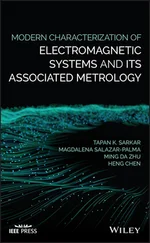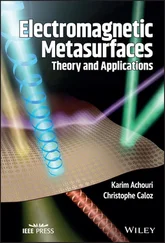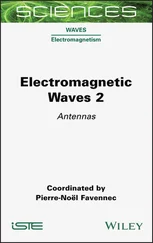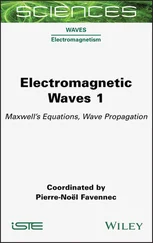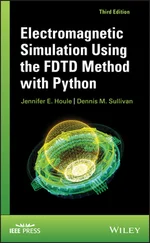1.3.2.2 Optical Fiber Communications
Optical fibers have been successfully integrated into communication systems, offering the advantages of large bandwidth, low loss and cost, and immunity to electromagnetic interference [65]. The conventional optical fiber is known as single‐mode fiber (SMF) and includes a core surrounded by a transparent cladding material with a lower index of refraction; the attenuation is typically 0.2 dB/km at 1550 nm and the core radius does not exceed 10 μm [53]. Up to now, the increasing demand for high‐speed data transfer in optical networks has been covered by the conventional SMF. The growing demand for network capacity is expected to continue in the future. According to Ref. [66], the annual global data center traffic will reach 20.6 Zettabytes (zB) – or 20.6 × 10 21bytes – (1.7 zB per month) by the end of 2021, up from 6.8 zB per year (568 exabytes per month) in 2016.
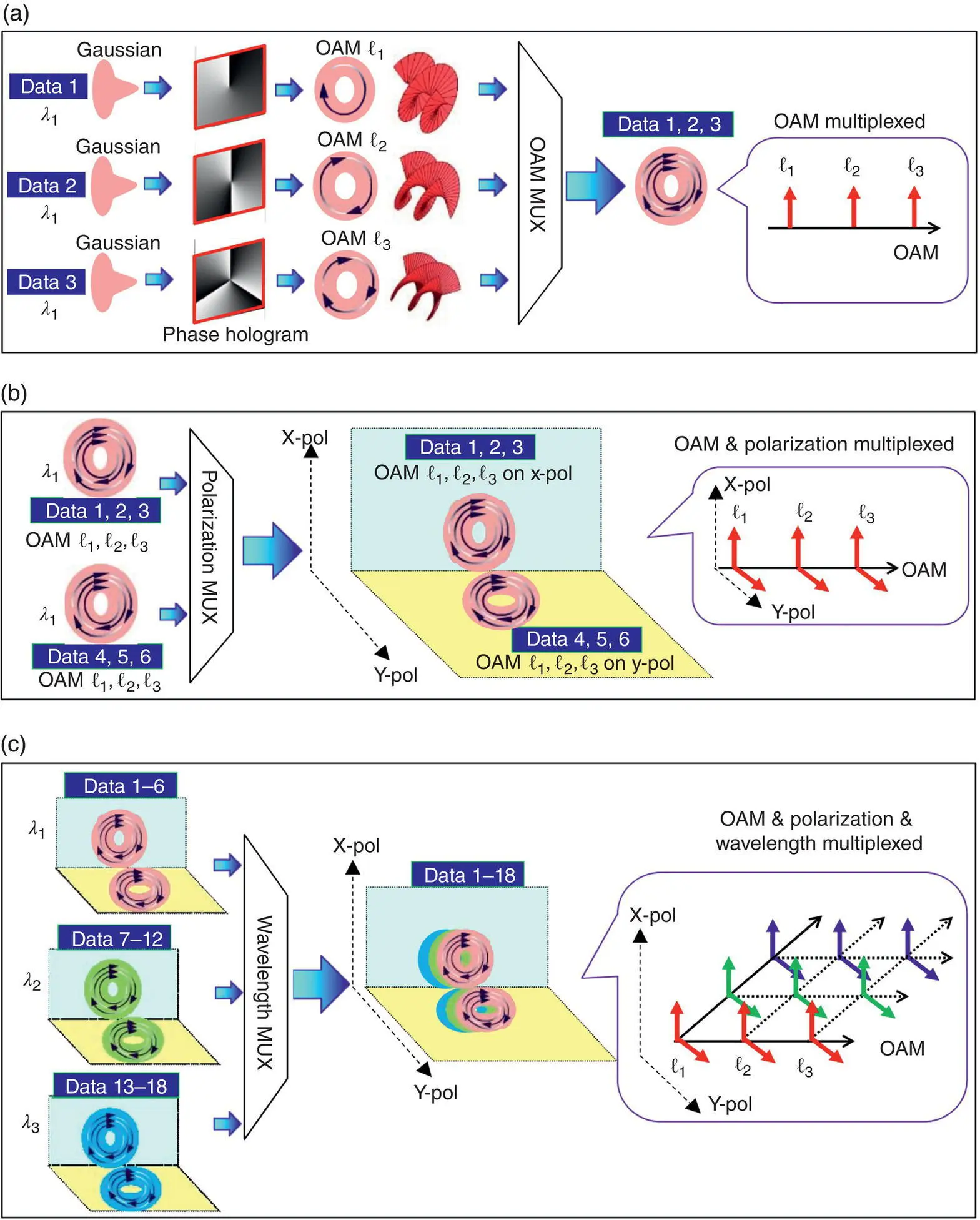
Figure 1.14 A schematic illustrating the concept of three‐dimensional multiplexing to increase the multiplexed data channels by combing (a) OAM‐DM, (b) polarization‐division multiplexing, and (c) wavelength‐division multiplexing.
Source: Huang et al. [60] © 2014 Optical Society of America.
In an attempt to meet the everlasting demand for network capacity, alternative methods have been developed to increase the spectral efficiency of optical networks. The problem is that the conventional SMF has its inherent capacity limits; therefore, researchers have focused on innovative ways to increase the data‐carrying capacity of a single optical fiber. SDM using multi‐core fibers (MCFs), multi‐mode fibers (MMFs), and their combination has been considered to overcome the capacity crunch of conventional SMFs [67, 68]. A schematic of different types of optical fibers is shown in Figure 1.15[65]. In an MCF, multiple cores share the same cladding and act as an independent data carriers; thereby, the spectral efficiency scales by the number of the cores. Unlike MCFs, MMFs have a single core that is larger than the conventional SMF, usually around 50 μm in radius. MMFs can support multiple spatial orthogonal modes each carrying distinct data and acting as a separate communication channel, thus increasing the spectral efficiency of optical fibers. The latter special case of SDM is known as MDM [67].

Figure 1.15 A schematic representation of different types of optical fibers.
The most popular spatial modes for fiber MDM are the linearly polarized (LP) modes. LP modes are the superposition of the fiber eigenmodes transverse electric (TE), transverse magnetic (TM), and hybrid modes of HE and EH type [65]. LP modes are the solution of the scalar Maxwell’s equations and propagate under the weakly guiding approximation, which is valid when the refractive indices of the core and the cladding are very close (within 1%) [69]. The intensity profiles of LP modes together with the constituent eigenmodes and the corresponding propagation constants β are shown in Figure 1.16a–d. The constituent eigenmodes of each LP mode have different propagation constants leading to walk‐off and mode distortion. LP modes also share common eigenmodes and thus are inherently coupled during propagation leading to crosstalk. To overcome the problem of mode‐coupling, MMFs rely on digital signal processing (DSP) algorithms based either on adaptive optics feedback or complex multiple‐input multiple‐output (MIMO) methodologies [32, 70].
To avoid inter‐modal coupling and MIMO DSP complexity in MMFs, OAM modes have been proposed as an alternative modal basis set [69]. The electric field of OAM modes in fibers can be expressed in terms of HE and EH hybrid modes as [71, 72]:
(1.16) 
The intensity profiles of OAM modes, the constituent eigenmodes, and the corresponding propagation constants β are shown in Figure 1.16e–h. Unlike LP modes, OAM modes are formed by the superposition of a single eigenmode type with even and odd symmetry [73]. That is, OAM modes are inherently de‐coupled resulting in low crosstalk, and the constituent eigenmodes with even and odd symmetry share the same propagation constant leading to a reduced walk‐off effect compared to LP modes [74]. As a result, OAM has the potential to increase the spectral efficiency of optical fiber communications while obviating complex DSP algorithms.
OAM‐based fiber communications is a new field of research with a short history. The first paper to report the generation of an OAM‐carrying optical vortex in a fiber was published in 2006 [76]. Bozinovic et al. reported the stable propagation of OAM modes in a new class of optical fibers, called vortex fibers [77, 78]. The vortex fiber of [78] maintained a mode purity of 97% after a propagating distance of 20 m at a wavelength of 1550 nm under bends and twists. The same group demonstrated the successful transmission of OAM states through a 0.9 km vortex fiber. In 2012, a 1.1 km long vortex fiber was presented [79]. A year later, the same 1.1 km vortex fiber was used to achieve 400 Gbit s −1data transmission using four OAM modes at a single wavelength of 1550 nm, and 1.6 Tbit s −1using two OAM modes over 10 wavelengths around 1550 nm with a low‐complexity DSP coherent detection method [80]. The experiment of [80] suggested that OAM could provide an additional degree of freedom for data multiplexing in future fiber networks using OAM‐MDM that does not require complex DSP [81]. At present, research efforts focus on the design of fibers that can support multiple OAM modes, both MMFs (see, for example Refs. [74,82–85]) and MCFs (see Figure 1.17and Refs. [75, 86, 87]).
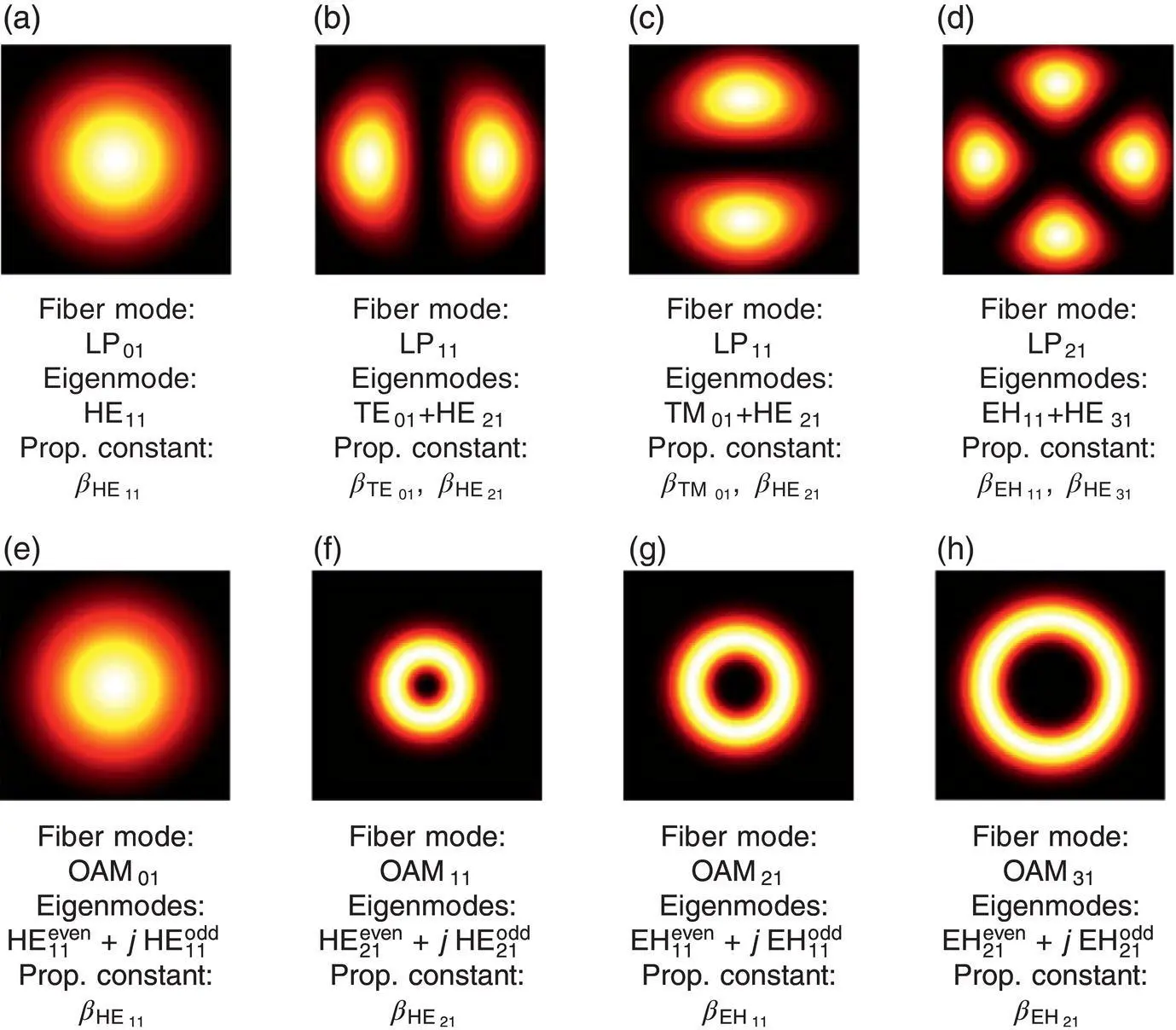
Figure 1.16 Intensity profiles of LP modes and OAM modes. The constituent eigenmodes and the propagation constants β of each mode are noted below each LP and OAM mode. Unlike OAM modes, LP modes (i) have distinct propagation constants leading to walk‐off and (ii) share common eigenmodes and are inherently coupled resulting in crosstalk.
1.4 OAM Generation Methods
The history of OAM dates back in 1992, when Allen et al. showed that helically phased beams with a phase term e jlϕcarry OAM [3]. Since then, research efforts have focused on the generation of OAM beams. Figure 1.18shows the analogy between the generation principle of OAM and conventional beams. In a conventional antenna system, a device (such as reflectors [22] and lenses [88]) is used to transform an input wavefront (for example, a spherical wavefront in Figure 1.18) into a planar wavefront, to achieve a highly directive beam in the far‐field. In analogy with the conventional antenna system, an OAM system employs an OAM device to transform the input wavefront into a spiral wavefront. Figure 1.19shows a representative example where the wavefront‐transformation devices are a parabolic reflector [22] and a helicoidal reflector antenna [23], corresponding to the conventional and OAM cases, respectively. The conventional reflector antenna attempts to achieve a uniform phase in the exit aperture, whereas the helicoidal reflector aims to achieve the OAM vortex phase.
Читать дальше






